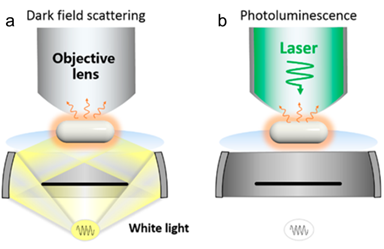Surface-enhanced Raman Spectroscopy (SERS) is boosted by the highly enhancement electromagnetic field around nanoparticles or nanostructures of plasmonic metals. It not only maintains the molecular fingerprint information of normal Raman spectroscopy, but also provides high detection sensitivity up to single molecule level. Thus, SERS serves as a powerful tool especially for monitoring the conformation of molecules/biomolecules and the microenvironment in a live cell with high spatial (up to nanometer) and temporal resolution (up to millisecond). However, the widespread application of SERS will be expected if a complete understanding of SERS mechanism and reliable and reproducible SERS substrates can be achieved. To this purpose, we are interested in the following topic:
Ever since the foundation of our group, we have pioneered innovative strategies to transform SERS from a specialized laboratory technique into a versatile tool for solving real-world challenges. In the past few years, by overcoming historical limitations in substrate generality, detection sensitivity, and standardization, we have expanded SERS applications to diverse fields from safeguarding cultural heritage to advancing biomedical diagnostics.
1. SERS mechanism: Understanding the original SERS enhancement can reveal the chemical and physical properties of metallic nanostructure that may have potential application in controlled chemistry and energy. This is to be achieved by both theoretical calculation (DDA, FDTD, FEM) and experiments.

2. SERS substrates fabrication: The precise fabrication of SERS substrates is a key issue for SERS applications in various fields. We aim to solve this issue mainly via the following two approaches: focused ion beam (FIB) and holographic lithography.

3. SERS detections: Developing methodology for sensitive detection of molecules such as, proteins, DNA/RNA, drugs, and so on, with the aid of rationally designed/prepared SERS substrates.

4. Spectrum-structure correlation of SERS: Developing algorithms for reconstructing molecular/biomolecular structures from SERS spectra, towards a clear spectrum-structure correlation.

5. Improve instruments: Development of hyphenated optical techniques by integrating Raman spectroscopy with dark field microscopy, fluorescence spectroscopy, in-situ cell culture device, etc.

